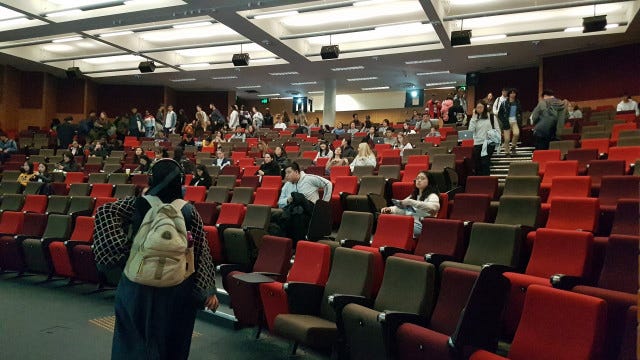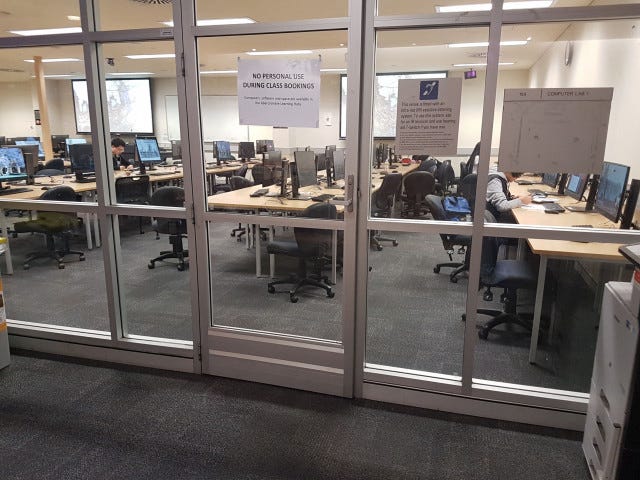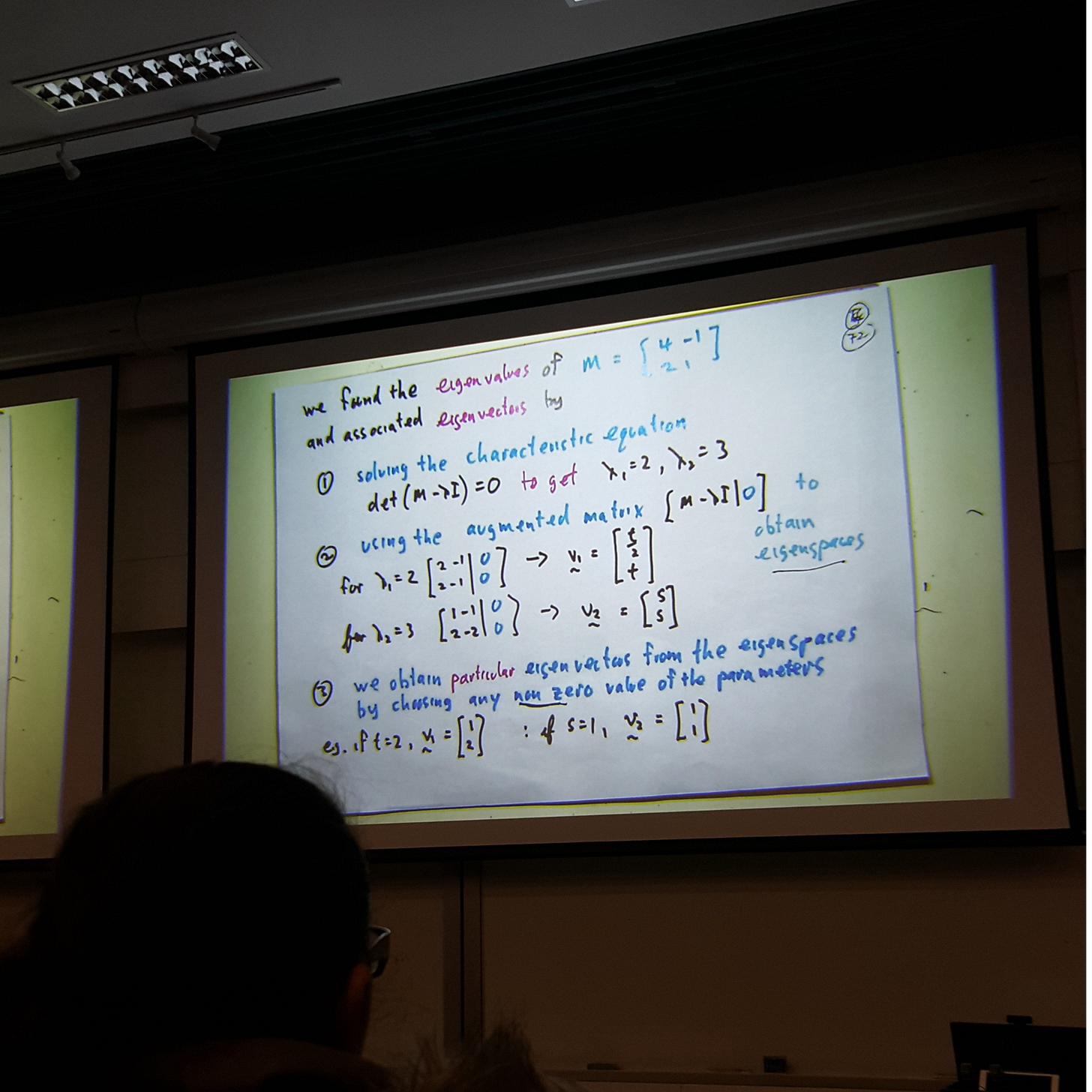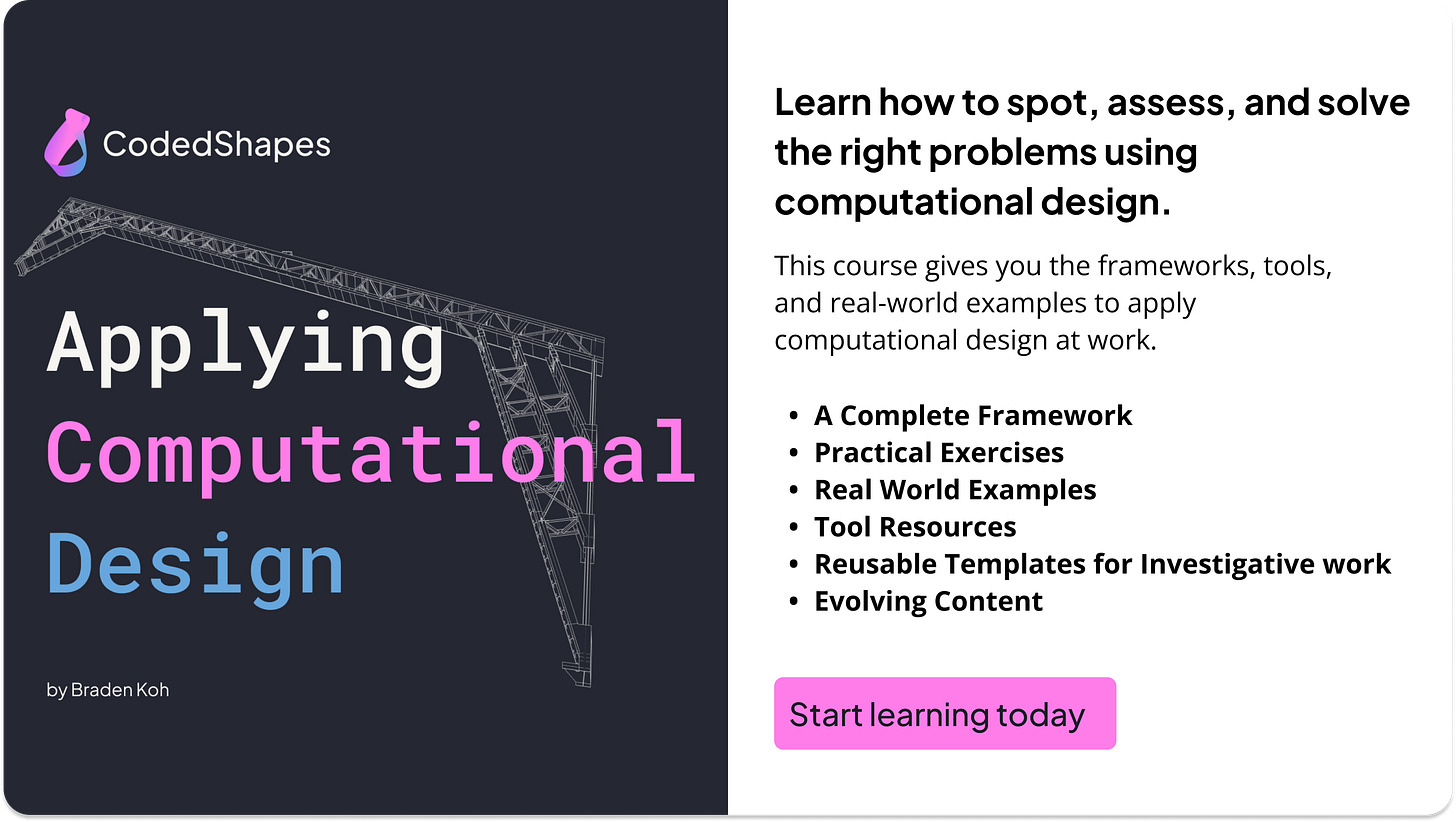Applying Computational Design Where It Actually Matters
Ah crap, that beeping sound means it’s time to get up.
I mean, it’s 6:30am.
Who gets up this early on a Tuesday?
Better yet, who puts a lecture at 8:00am and not record it.
I should just stay in today, I mean it’s just one lecture.
Then the sensible part of my brain wins
I will myself out of bed. Brush my teeth, get dressed and caught the train to my very early lecture.
The lecture hall is stuffy and full of yawning students with their laptops open. I weave through the seats to find my friends in the usual spot, in the center of the middle row. Far enough that the lecturer can’t pick on us but close enough that we can still hear.
I nod to a few of them, sat down and got my laptop out. There was no chit-chat. It’s too early and we saw each other yesterday.
The lecturer walks in, pulls up his slides on the projector and begins today’s lesson.
“Loops in programming”
Oh great. I signed up for engineering, and we’re talking about how to make a computer go on repeat.

Mercifully, the hour long lecture ends and we’re herded into tutorial rooms, where we’re told to “put today’s lecture into practice.”
The tutorial rooms are always cold, something about keeping the computers and servers at the right temperature. I make my way to a computer and sit down.
As soon as the last student walks in, the tutor starts today’s lesson.
“We’re going to use what we’ve learnt about loops to try and make tic-tac-toe”
What. The.....
I signed up for engineering and I am here building tic tac toe ?
The next few weeks weren’t any better either. It’s always some random exercise. Make tic-tac-toe, draw a box, time how fast you can sort “books”. None of it is engineering and all of it felt pointless.
When the semester ended, I’m just grateful I passed with a 55. It meant I’d never have to take that dumb “essential” class again. More importantly, I never have to touch programming again. I can’t believe my dad wasted thousands of his hard earned money for me to learn tic-tac-toe. Talk about a bad deal.

Then my second year started and I headed to my first aerodynamics tutorial of the semester at 10:00am. Thank god, it’s a reasonable time.
I am excited. After a full year of “essential math” and “essential computing”, I finally get to learn some actual engineering.
I found a spot and sat down. And like clockwork, the tutor hands out a seven-page worksheet titled:
“Solving the Finite Difference Equations with Code.”
Oh no. Not this again. Not programming. This time, I am definitely going to fail. Why are we programming again ? I thought we are done with that crap.
But something’s different here. There are equations this time, real ones, not some made up ones like before. It’s ... interesting? It’s also engineering. Hang on, we’re not building a random game ?
Oh, computers can do math for us. Okay, that’s why I needed to learn arrays because computers can process them faster. Oh, a “for loop” is actually how you get the computer to solve an equation over a domain.
Programming is actually useful? You mean it’s not just for doing silly things?
Then next few weeks was epiphany after epiphany after epiphany. Each tutorial taught me that programming is actually critical to engineering. In fact, it was vital to doing the things we see today.
That semester, I got a 96 in aerodynamics and went on to learn five more programming languages by the end of my degree. I also got an internship at a structural engineering software company where I learnt how to develop industry standard software.
Maybe the university was right, programming was essential. They just needed to show me how it was used.
Why context matters
It’s been about 8 years since then and I can’t imagine a day that I don’t write code.
Looking back, it’s obvious why I hated programming. I couldn’t see how it applied to my world. I came to university for engineering, which to me meant Excel, math and physics, not building tic-tac-toe. I knew programming was useful for games or making mobile apps, but I never thought it was useful for engineering.
That unit felt pointless until I saw how it connected to what I cared about.
I see the same pattern with computational design. People know it’s valuable, but they don’t think it applies to them. It becomes “interesting.... but that’s not for me” or “I’ll learn it one day when I’m free”. And with AI everywhere, the pressure to “learn digital” is louder than ever. But to make any learning meaningful, we still have to find a way to make it fit into our work.
Why learning computational design is difficult
Even companies that claim to “teach computational design” often only show what they built and run through the long list of things it can do. They put you in workshops full of examples without showing how you can use it in your work
Well, showing examples is easy. Doing the digging to find where it actually fits is harder. Teaching people how to tie back generic computational design training to their own work is harder.
Google computational design and you’ll find a wall of complex geometry and flashy projects. All impressive stuff but none of it is relevant to you. Many people might even find it alienating. It re-affirms the belief that computational design isn’t for them.
What to do instead
If you want to learn computational design but you just can’t see how it will be useful to you. Then you’re not alone. I’ve spoken to many people that feel the same way.
And my advice isn’t any better. Before you even learn Grasshopper or Dynamo, you need to put in the effort to find where it fits your work. That means do some reflection and investigative work to understand the problems right in front of you.
Instead of taking another random online course or jumping into a “Grasshopper for beginners” workshop for the umpteenth time, invest that time into finding a problem you genuinely care about. Then try applying computational design to that. Again, context is the key here.
You want to anchor everything you learn to something practical so it never feels pointless.
My new course
That’s the goal of my new course. It’s not a tutorial on Grasshopper or a walkthrough on Dynamo. It’s a way to help you see and spot problems that computational design can meaningfully solve in your world. And don’t worry, it doesn’t cost your salary.
The goal is to connect those seemingly trivial bits of computational design to problems you actually care about.
I was obsessed with programming when I found out how valuable it was, I would love to help others feel that way about computational design too.
Thank you for reading. Consider subscribing if you haven’t, it really helps me know my writing here is useful.





